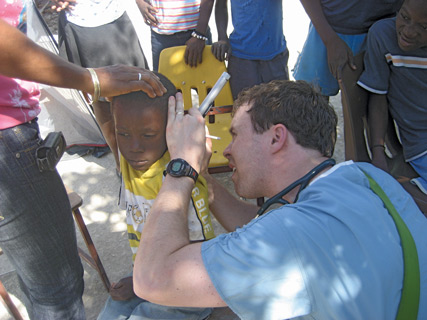In Haiti, flawed health care infrastructure complicates rebuilding
Internists help pick up the pieces in Haiti, a country facing a public health crisis following a devastating earthquake.
When Haiti was rocked by a 7.0 earthquake in mid-January, the world knew that immediate medical help would be desperately needed. But physicians who'd previously volunteered in the country had a special insight into the extent of the catastrophe. Before the earthquake, Haiti's health infrastructure was already borderline. In addition, in 2009, 45% of the population lacked access to safe water and 83% lived in unsanitary conditions. The earthquake stretched an already bad situation past the breaking point. Now Haiti's citizens face more long-term threats, such as contagion and disease and psychiatric problems, while internists and other medical volunteers are trying to rebuild a devastated health system that was inadequate to begin with. ACP Internist talks to several internist-volunteers about the challenges Haiti faces as it tries to recover from disaster.
Quality improvement has been a buzzword in medicine for over a decade, yet physicians interested in learning about this important area of the field have usually had to do so on the fly. That's now changing, as master's programs focusing specifically on quality have begun cropping up across the country. Aimed mainly at mid-career professionals looking to improve their quality bona fides, these programs offer physicians opportunities to delve into the science of quality improvement and learn how to apply it to their own practices and institutions. Read our story to learn more about three new graduate-level programs.
Retail clinics have been in the news for good and bad reasons over the past few years, touted as conveniences that improve access to care and derided as one-stop shops that trivialize the doctor-patient relationship. We report from the recent National Retail Clinic Summit on some of the controversies surrounding retail clinics, including the quality of care they provide, their effect on health care costs, their real role in access to care, and the services they can and should offer.
Even when busy internists have a good grasp of the ins and outs of warfarin management, there's the issue of reimbursement. Accurate coding in this area involves a three-pronged approach that encompasses diagnosis, lab tests and anticoagulation management. Read tips to help ensure that you're being paid correctly for managing this complicated care.
Next month's issue will feature our wrapup of coverage from Internal Medicine 2010, held in April in Toronto. If you attended the meeting, we'd like to hear what you thought about it. What did you like, and what did you dislike? What was most valuable, and what would you change? Let us know.
Sincerely,
Jennifer Kearney-Strouse




